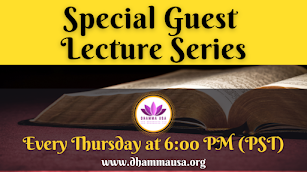Fullnote Example:
- Kurt A. Behrendt, The Art of Gandhara in the Metropolitan Museum of Art (New York: Metropolitan Museum of Art, 2007), 45.
Subsequent Short Note Example:
- Behrendt, The Art of Gandhara, 45.
Instructions:
Books: Include the author's full name, the title of the book in italics, the place of publication, the name of the publisher, the year of publication, and the specific page number.
Articles: Include the author's full name, the title of the article in quotation marks, the title of the journal in italics, the volume number, the issue number (if available), the publication year in parentheses, and the specific page number(s).
Full note for an Article Example:
- John Smith, "Buddhist Art in Ancient India," Journal of Asian Studies 52, no. 1 (2003): 67.
2. MLA (Modern Language Association)
Works Cited Example for a Book:
- Smith, John. Buddhist Art in Ancient India. New York: Metropolitan Museum of Art, 2007.
In-Text Citation:
- (Smith 45)
Instructions:
Books: Start with the author's last name, followed by the first name. Italicize the title of the book. Include the place of publication, the publisher's name, and the publication year.
Articles: Begin with the author's name, followed by the title of the article in quotation marks, the title of the journal in italics, the volume number, the issue number (if applicable), the publication year, and the page numbers.
Works Cited for an Article Example:
- Smith, John. "Buddhist Art in Ancient India." Journal of Asian Studies, vol. 52, no. 1, 2003, pp. 67-82.
In-Text Citation:
- (Smith 67)
3. APA (American Psychological Association)
Reference List Example for a Book:
- Smith, J. (2007). Buddhist art in ancient India. New York: Metropolitan Museum of Art.
In-Text Citation:
- (Smith, 2007, p. 45)
Instructions:
Books: Start with the author's last name, followed by the first initial. Include the publication year in parentheses, the title of the book in italics, and the place of publication followed by the publisher's name.
Articles: Start with the author's name, the publication year in parentheses, the title of the article in sentence case, the title of the journal in italics, the volume number, and the page range.
Reference List for an Article Example:
- Smith, J. (2003). Buddhist art in ancient India. Journal of Asian Studies, 52(1), 67-82.
In-Text Citation:
- (Smith, 2003, p. 67)
Summary:
- Chicago Fullnote: Often used in history and the arts, with full citations in footnotes and a bibliography.
- MLA: Commonly used in humanities, with in-text citations and a "Works Cited" page.
- APA: Used primarily in social sciences, with in-text citations and a "References" list.
Each style has its unique formatting rules, so it’s important to use the correct format for your discipline and assignment requirements.
Tags/Keywords:
#Citation styles, #Chicago Fullnote, #MLA format, #APA format, #academic writing, #referencing, #bibliography, #in-text citations, #humanities, #social sciences, #academic disciplines, #writing tips, #research paper, #academic guidelines.
































0 comments:
Post a Comment
Your comments and feedback are very helpful to us in improving our posts. We really appreciate your time. Thank you!
Dhamma USA Team.